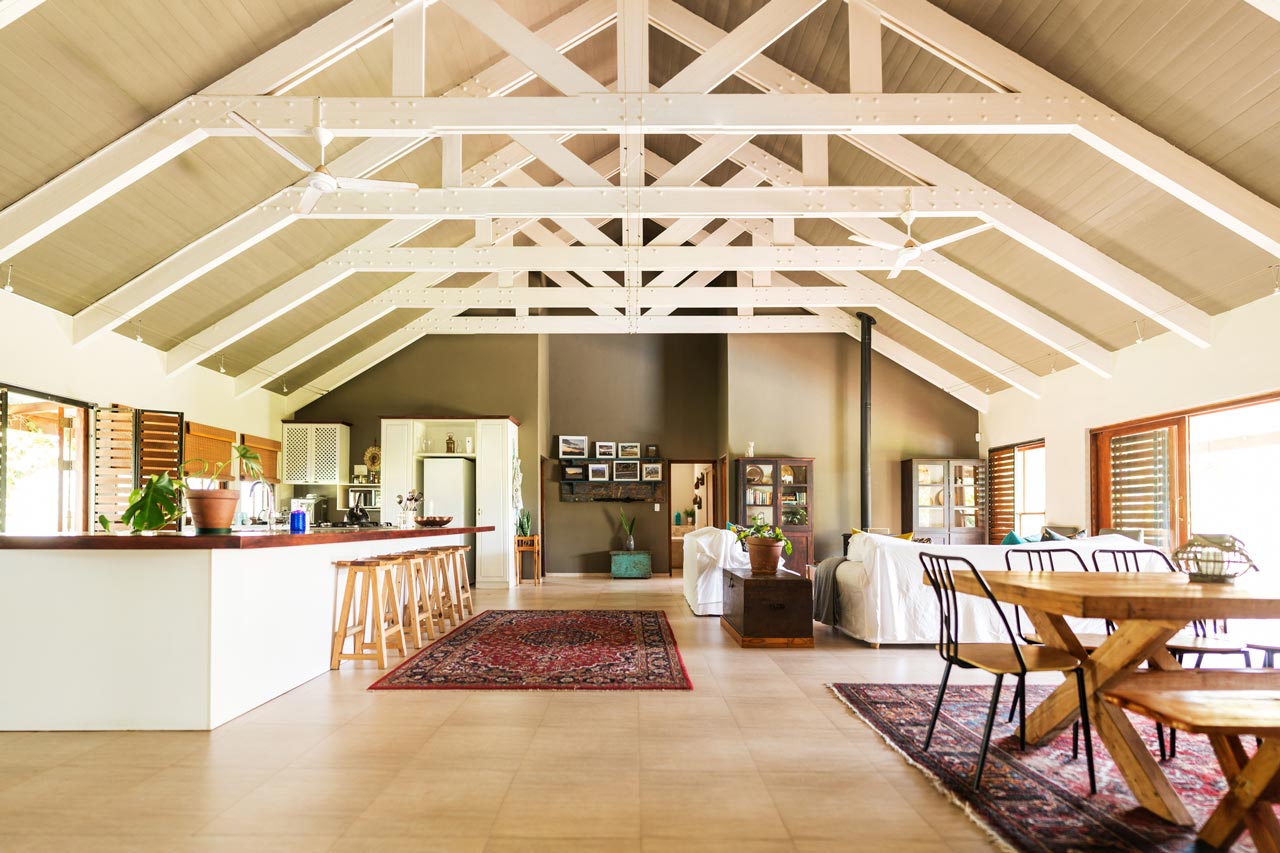Barndominium Builder: Specialist Workmanship for Your Dream Home
Barndominiums Vs. Traditional Homes: a Detailed Comparison of Way Of Living and Functionality
The choice between barndominiums and standard homes encompasses numerous aspects, including lifestyle choices and useful requirements. Barndominiums are defined by their open formats and versatility, typically appealing to those that prioritize communal living and versatility.
Overview of Barndominiums
Barndominiums, a novel real estate fad getting appeal across different regions, mix the rustic charm of barn-style style with the capability of modern home. These distinct frameworks normally include a metal or wood framework, combining open layout and high ceilings with energy-efficient functions. Frequently positioned on extensive country residential properties, barndominiums use homeowners the opportunity to appreciate a tranquil lifestyle while supplying ample area for various activities.
The versatility of barndominiums extends past their aesthetic allure; they can offer as both living quarters and practical areas for hobbies, workshops, or perhaps local business. Their adaptive style enables for easy modification, accommodating varied family members needs and choices. Many owners value the reduced maintenance requirements related to metal home siding and roofing, contributing to long-lasting longevity.

Attributes of Traditional Residences
Emphasizing classic style and comfort, traditional homes are identified by their unique architectural styles, which typically mirror historical influences and local aesthetics. Typical attributes include in proportion exteriors, gabled roofing systems, and an emphasis on workmanship, causing a cozy and inviting environment.
Standard homes usually include aspects such as crown molding, wainscoting, and wood floor covering, enhancing their classic allure. They usually include several rooms with defined objectives, promoting family members communication while enabling for privacy. click here to view. The design typically includes formal living and eating areas, which contribute to entertaining visitors and holding family events
Exterior materials such as brick, timber, or rock are frequently made use of, adding to sturdiness and a feeling of durability. Barndominium builder. In addition, lots of traditional homes are designed with front verandas or stoops, cultivating a feeling of neighborhood and connection with the area
Landscaping plays a considerable duty in traditional home style, with well-kept yards and pathways that improve aesthetic charm - learn more. In general, conventional homes symbolize a feeling of fond memories and security, appealing to those that value heritage and an extra structured living atmosphere
Price Contrast
Usually, a price contrast between barndominiums and standard homes discloses considerable differences in building and construction expenses and general investment. Barndominiums, frequently constructed from metal or steel structures, usually incur lower product and labor costs than conventional homes built from wood and brick. The simplified style of barndominiums can convert to minimized construction times, further lowering labor prices and accelerating occupancy.
Typically, the expense per square foot for a barndominium varies from $100 to $150, while conventional homes can vary commonly, typically falling between $150 and $300 per square foot, depending on area, materials, and style complexity. This price variation makes barndominiums an attractive option for budget-conscious purchasers looking for bigger home without sacrificing quality.
Additionally, barndominiums might cause long-term savings via lower maintenance costs, power efficiency, and insurance policy prices. Their durable building products frequently call for much less upkeep in time contrasted to conventional homes. Nevertheless, it is essential to consider that while preliminary costs might be lower for barndominiums, the final investment will also depend on specific modification and desired features, which can influence the general cost in both real estate types.
Way Of Life and Area Considerations
When considering way of living and room, barndominiums offer an unique flexibility that attract a variety of house owners. These hybrid structures combine domestic coping with useful room, typically including open layout that can be adjusted to match private requirements. This adaptability is particularly beneficial for households or people looking for an individualized living setting, permitting diverse uses such as office, workshops, or entertainment areas.

Moreover, the visual appeal of barndominiums can accommodate both rustic and contemporary preferences, making them a flexible option for numerous style preferences (Barndominium repair). Eventually, the option between a barndominium and a conventional home commonly pivots on just how well each choice straightens with the homeowner's lifestyle aspirations and spatial requirements, highlighting the relevance of taking into consideration personal priorities in the decision-making procedure
Ecological Effect and Sustainability
The ecological effect and sustainability of barndominiums existing compelling benefits compared to standard homes. Primarily built from steel and various other sturdy products, barndominiums are frequently constructed making use of recycled resources, minimizing the need for brand-new products and decreasing waste. Their design usually highlights open rooms, which can lead to lower energy usage for home heating and air conditioning compared to conventional homes with more fractional layouts.
Additionally, barndominiums can incorporate lasting attributes such as solar panels, rain harvesting systems, and advanced insulation techniques, improving their energy performance. The adaptability of their design enables property owners to incorporate these technologies more effortlessly than in many conventional homes, which might need substantial retrofitting.
Additionally, barndominiums typically require less resources for building and construction as a result of their easier, more efficient styles. This not just reduces the carbon impact linked with building however likewise adds to a more sustainable way of living. In comparison, typical homes might include greater degrees of energy expenditure and source use throughout their lifecycle, from building and construction to maintenance. Generally, barndominiums stand for a forward-thinking approach to sustainable living, straightening with contemporary environmental top priorities.
Verdict
In summary, the Full Report choice in between barndominiums and conventional homes hinges on private way of living choices and functional requirements. Barndominiums, with their open layouts and sustainable products, accommodate those looking for adaptability and communal living. Conversely, traditional homes offer specified rooms that boost privacy and maintain historic appearances. Each alternative presents one-of-a-kind benefits, demanding careful factor to consider of one's values and needs when identifying one of the most appropriate living setting.